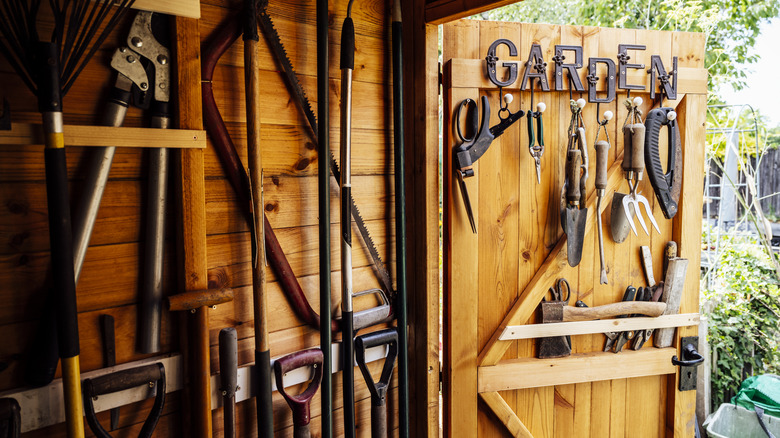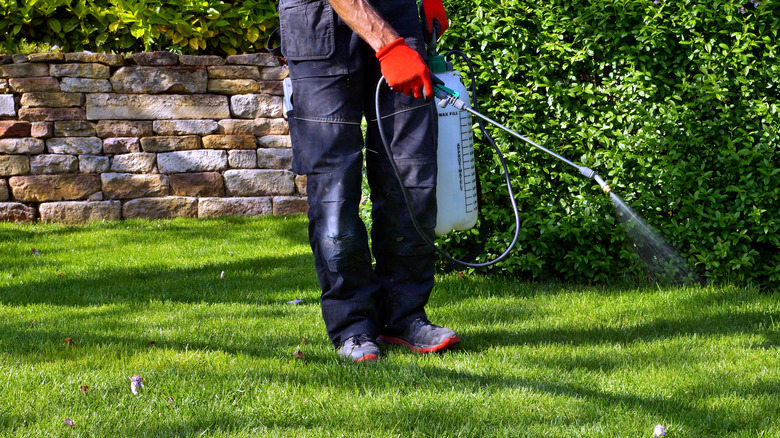How To Get Rid Of Aggressive Peppervine Before It Strangles Your Perfect Lawn
Aggressive weeds are just that: aggressive. Incredibly resilient and hard to get rid of, these weeds can cause homeowners a lot of headaches and frustration. Keeping a lawn green and healthy takes a significant amount of time and energy, and when it gets overtaken by relentless weeds, it's exceptionally annoying -– to say the least.
Peppervine (Ampelopsis arborea) is a common aggressive weed that can easily take over a lawn due to its vining and perennial nature. It will take a good amount of effort to totally get rid of it. However, it is possible and highly gratifying once achieved! There are plenty of natural ways to keep your lawn green and healthy. However, aggressive weeds can throw a wrench in your efforts to maintain lush landscaping. Thankfully, there are two effective ways to get rid of these pesky weeds: hand pulling or the use of an all-natural herbicide.
What is Peppervine?
Ampelopsis arborea, commonly known as peppervine, is a native vining plant in the grape family. There are a few different species in the ampelopsis family. However, ampelopsis arborea is native to the Southeastern U.S., west into Mexico, and south into Puerto Rico. Ironically, peppervine has a lot of desirable qualities when it comes to landscaped plants. It's pest-resistant, perennial, hardy, has colorful berries, happily climbs a trellis, and provides food for local wildlife. Those same qualities that make it a hardy and resilient landscape plant also make it difficult to get rid of.
Because of its vining nature and intensive growth habit, it can easily outcompete surrounding plants. Reaching heights up to 20 feet, peppervine can completely overtake an area, killing your green grass in the process. Additionally, it has a deep taproot, making it challenging to fully remove it by hand pulling. However, if you catch it early enough, you can indeed remove it by hand. You just have to stay vigilant and keep an eye out for new growth. There are a few different options for eliminating peppervine from your lawn.
How to get rid of peppervine?
Peppervine is an aggressive weed that can be a nuisance if it's popping up on your lawn. Thankfully, there are a few different ways to get rid of it. First and foremost, hand pulling is the best option for mild infestations if the plant isn't too established. If you're just noticing in your lawn, you can probably hand remove it. More intensive measures may be necessary if it has become established. If you are going the hand-pulling route, be sure to get as much of the taproot as possible. This will ensure it doesn't come back. Since peppervine produces a good amount of berries, there may be a significant amount of seeds in the seed bed, so you will have to monitor the area for at least two years to ensure it doesn't make a comeback.
If hand removal isn't working, it's time to call in the big guns — an all-natural broadleaf herbicide. You don't want to use any toxic chemicals as this can devastate your waterways and local ecosystems. Instead, opt for a substitute for conventional weed killer like a certified organic broadleaf herbicide like Avenger. Avenger is an all-natural, highly concentrated formulation of d-Limonene, the primary terpene in citrus. It is essentially an extremely strong citrus oil that kills most weeds within one hour of contact.
What tools you'll need to remove Peppervine
Since peppervine has a deep taproot, you'll want to come prepared with garden tools to make the process easiest. The size and how established the weeds are will inform what kind of tools you'll need. For larger plants with more robust root systems, use a root slayer. This is one of the best tools for removing large woody shrubs and cutting through the roots. It's a pointed shovel with serrated, sharp sides that make it much easier to cut through roots than with a regular shovel. Tractor Supply sells them for $60, but you can also get a smaller, hand-held version of the tool for $17. You could also use a soil knife or hori hori, which are hand tools best suited for smaller peppervine plants.
How to hand remove peppervine
Hand removal will consist of locating the plant in your lawn, identifying it, and hand-pulling it. If you're dealing with a pretty established plant with a deep taproot, you will want to use a gardening tool to get as much of the taproot as possible. Identification is key as peppervine is often confused with poison ivy and poison oak. The main difference is that poison ivy has greenish-yellow berries and three leaves and does not form a vining habit. Whereas, peppervine has alternate compound leaves along the stem and a black berry. When you're sure you have identified peppervine, wear garden gloves to protect your hands and then get to work. The key thing with hand removal is to be sure you're getting rid of as much of the taproot as possible, as any remnants left behind may result in a re-emergence.
How to use Avenger for peppervine removal
Common chemical herbicides, like Roundup, can have severe impacts on human and environmental health. That's why if you're going to use a herbicide, it's essential to use an organic, non-toxic alternative. Avenger is an all-natural, highly effective herbicide formulated with a single ingredient — citrus oil. It kills weeds within the hour, does not leach into the soil, and is safe to use around edible plants. It will, however, kill any plant that you spray it on as it is non-selective, so proceed with caution when using it to kill peppervine in your lawn.
You can get Avenger online starting at $35 for a 32 oz. Simply consult the packaging and create the recommended dilution for your needs. For hard-to-control perennial weeds like ivy, a 1:3 ratio is recommended: 1 part Avenger to 3 parts water. Shake and mix well before spraying. Make sure you thoroughly soak the peppervine foliage but take care not to let the spray too much on your grass or surrounding plants. You can use a funnel for precise spraying.





